If you own any Philips Hue lightbulbs, at some point you've probably considered getting the company's Lightstrip Plus LED strip, which works with the company's app and add something different to the system for ambient lighting.
I purchased the Hue Lightstrip Plus when it was 50% discounted last Black Friday on Amazon, and while the strip works fine, it's just crappy in general by today's standards and waaaaay overpriced for what you get—so I wanted to figure out a Philips Hue Lightstrip hack that would get the price down.
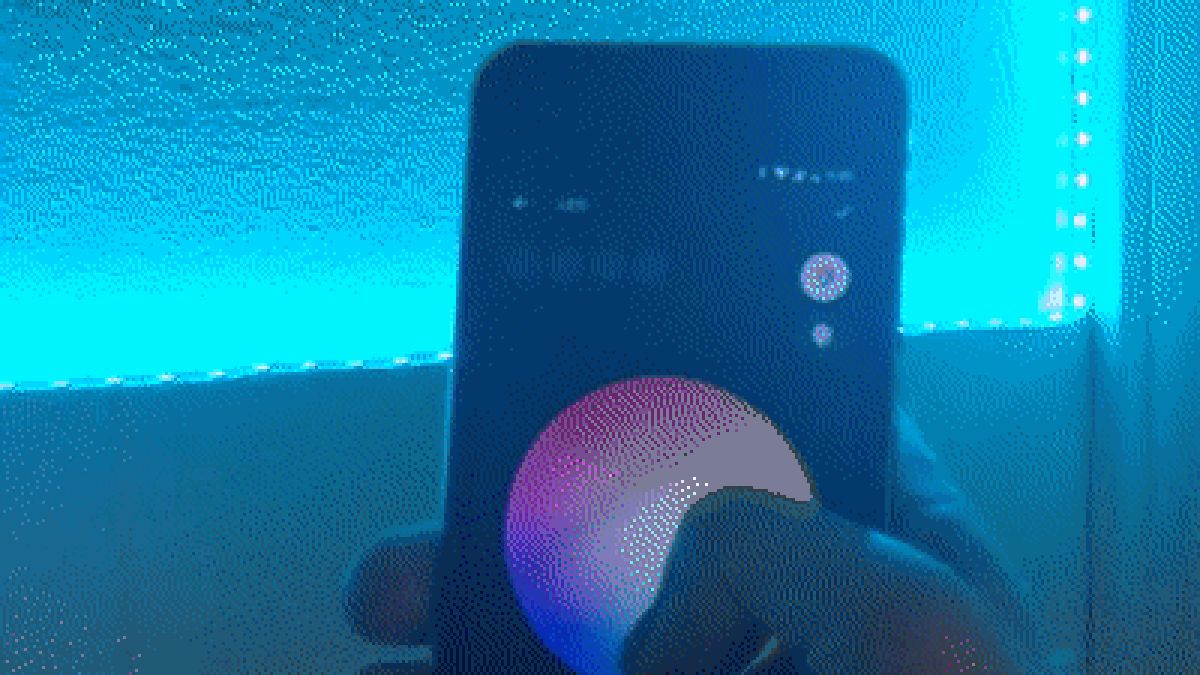
You pay $60 for two meters of low-density LED strip with poor brightness, but rich colors, and it has a number of limitations including how many you can join together.
Meanwhile, I can get 50 meters of dense, bright LED strips on Aliexpress that perform just as well — but don't work with Hue. I like the idea of all of my smart stuff working in the same place, but can't justify splashing out $60 to add more LEDs to the house.
This had me wondering: why not just make them myself? Well, until recently, it was nigh impossible to get this to work properly for various reasons, but I've found a few great options for those who are eager to find a way to get cheaper, better Hue strips that work just like the official ones.
With all of this in mind, these are my results, at time of writing, so please don't consider this a guarantee! I've made four different versions of the cheaper pick, and am still very happy, but your mileage may vary. Without further ado, here's the result:
Quick background
The reason the Philips Lightstrip Plus costs so much is it has great color accuracy and they are designed to color match with the Hue LED bulbs.
Philips uses a special type of LED strip called RGBWW (Red / Green / Blue / Warm White) which features a separate LED diode for the white colors, to produce the right hues of white, as well as great RGB colors. This drives the price higher, but results in better accuracy across the spectrum.
Since the Lightstrip Plus was released, the RGBWW strips have come down in price dramatically and it's actually possible to find them right now for great prices with better performance than the Hue. Philips, unsurprisingly, has not updated its strip nor lowered the price, which is why we're here.
I've explored a number of options, along with my friend Kees Plattel, and found a solid alternative that you can order today. Here's your options.
Expensive, quick, overkill
Skill level: I know how to use a screwdriver
Time: 30 minutes or less
The first option that kept coming up in my cursory searches for LED strips that aren't Hue's own was the FLS-PP LED ballast on Amazon for a whopping $50. This is a high quality controller, supposedly, that works with Hue, but it's almost the price of Hue's whole strip.
Many people have reported this option as working, but I think it's just not worth it at this price point unless you plan to drive a ton of LEDs off of this thing. For $50, you can build your own strips end-to-end, without soldering anything, so read on for more...
Easy, cheap, quick
$2 LED strip + $15 Alibaba controller = Hue LED strips that don't break the bank pic.twitter.com/LhPu0k7bBh
— ⚡️ Owen (@ow) April 26, 2018
Skill level: I know how to use a screwdriver
Time: 20 minutes or less
Every now and then over the last year I perused Aliexpress when bored to find a Hue-compatible controller with no luck.
Recently, however, I came across a new brand: Gledopto, which is advertising Hue and Tradfi compatible controllers that require zero soldering or software hacking to get it working, which sounded promising. I ordered the basic RGB version (read on for more about the options), which is cheapest, along with a roll of cheap RGB LEDs and waited.
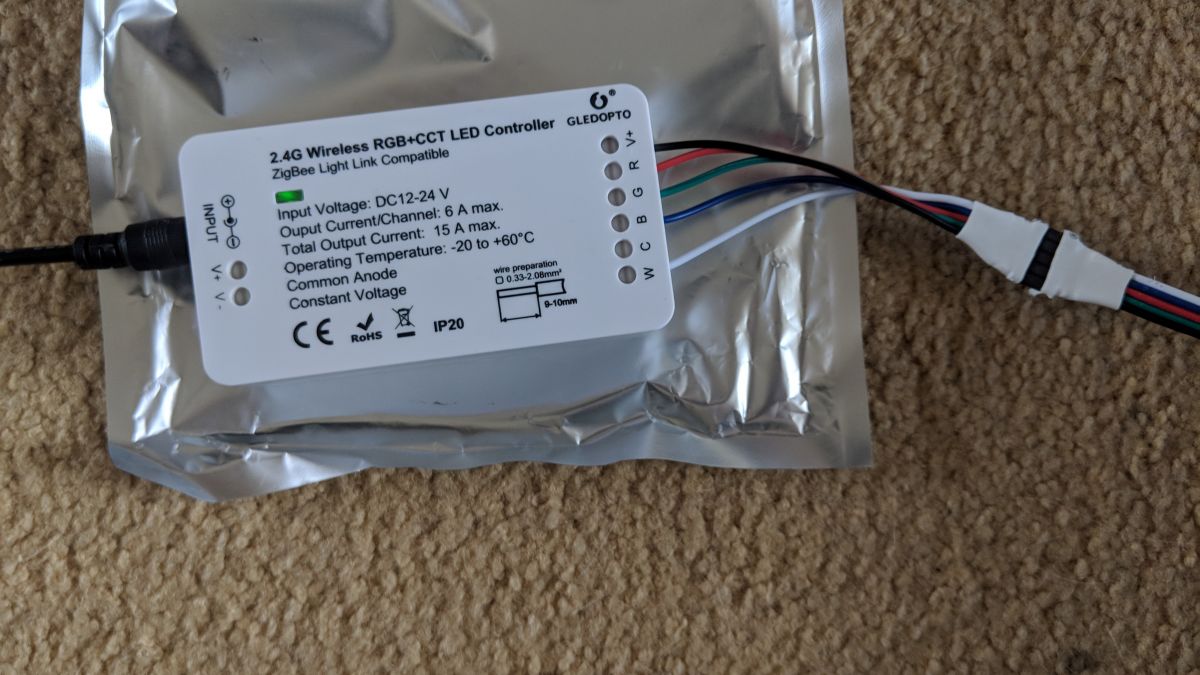
The controller arrived a few weeks later and I was fairly impressed: it's a simple little unit that takes a few LED wires on one side, and on the other, a power supply. The Gledopto controller does not ship with a power supply so you need a 12V, 3A+ power supply to use it, but I had one lying around.
If your LED roll came with a connector on the end (it should, if you order from the above link), all you need to do is cut off the plastic port, strip the wires, and push them into the corresponding labelled hole on the controller while holding a screwdriver in the holes on top.
Once you do this, that's pretty much it. You can plug in the controller, and add it via the Philips Hue app's "Add Light" wizard, and it'll show up as "Extended Color Light" in the app. That's it! The performance is actually on par with the native strip, and it even fades in/out unlike other third-party bulbs.
The problem with the RGB version is that it's not quite as accurate, especially toward the white spectrum because you've got less lights to deal with. Given I was building this because I wanted to outline my desk with it and sync with Flux, that wasn't an option so I installed the RGB strip in the kitchen.
With this success, I decided to opt for Gledopto's slightly more expensive RGB-CCT controller, which has the extra pins required to control a RGBW strip.
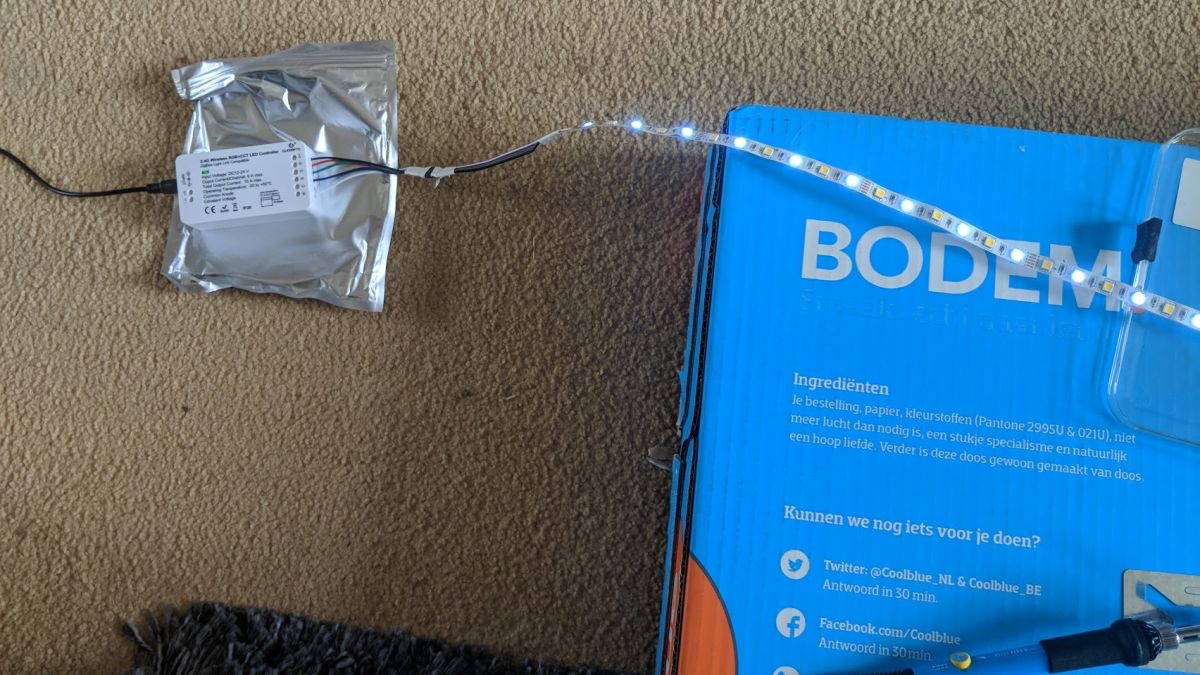
Side note: the difference between the RGB-CCT and RGBWW version you'll see is that the CCT version merges the white diodes into a single light in the Hue app, and the RGBWW option adds a second bulb in the app to control the white spectrum exclusively.
This is useful if you want to target a specific color spectrum without flicking between the LEDs when moving into the white spectrum mode, which can be annoying. You'll want to make sure when ordering that you get a RGBWW strip, which has the additional pin and LED diode we've been working to find.
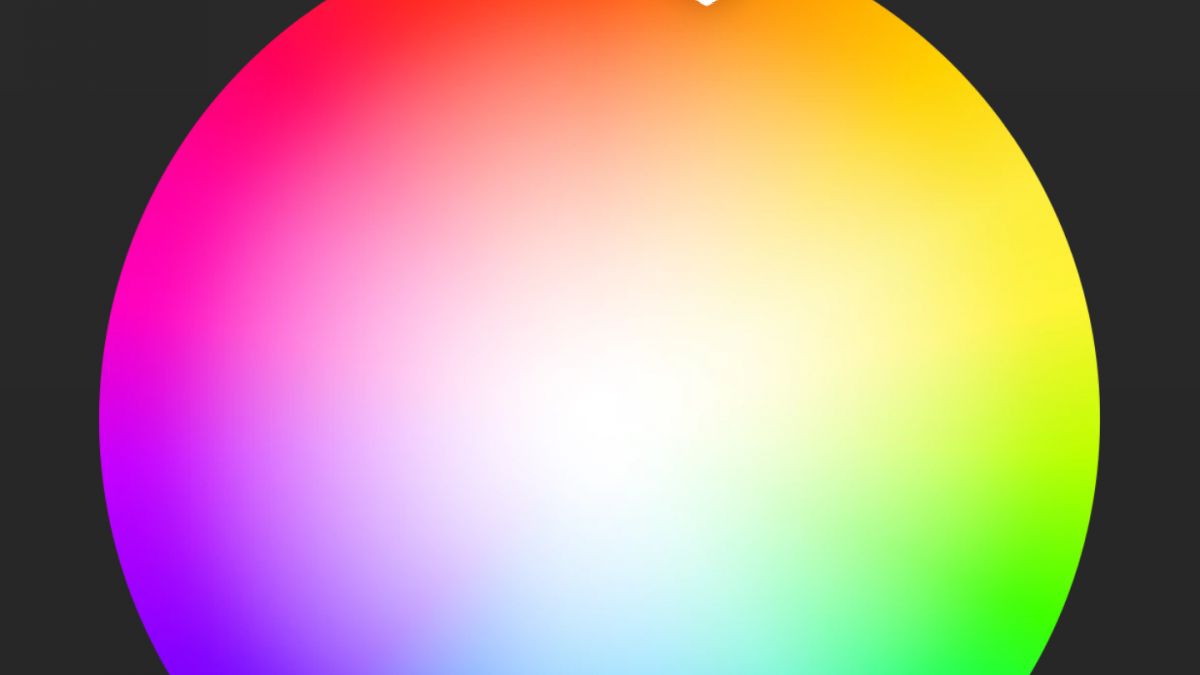
The new controller, compared with the other one, has an additional connector hole to match the LED strip. It's the same simple process, and shouldn't take long. Once it's added, it'll work just like any other Hue bulb, and the response time is fantastic!
With this option, we've managed to build a RGBWW LED strip that works natively with Hue for more than half the price of a full-price Hue Lightstrip, that's much brighter and just as color rich as far as I can tell.
If you're wondering about drawbacks of this approach, I've not noticed any major issues except that you won't be able to use it with Philips' new Entertainment Zone feature, which is required to use the Hue Sync PC/Mac app.
That said, there are other software options out there that work great with these LED strips, so no great loss.
Here's a list of parts I recommend you buy
LED strips:
- Beilei RGBWW LED strip, 5M ($8)
- Alternative RGBWW LED strip, ($10)
- Double-row RGBWW LED Strip, upgrade pick based on 5050 chipset ($20)
Choose a controller:
- RGB-CCT for full color on a single light strip ($25, and my recommended choice)
- RGB/RGBWW for separate white/color bulbs in the Hue app. ($25)
Power supply: 12V, 3A EU plug - if you are going over 5 meters, get a 5A power supply instead ($3).
Hacker's LED strip
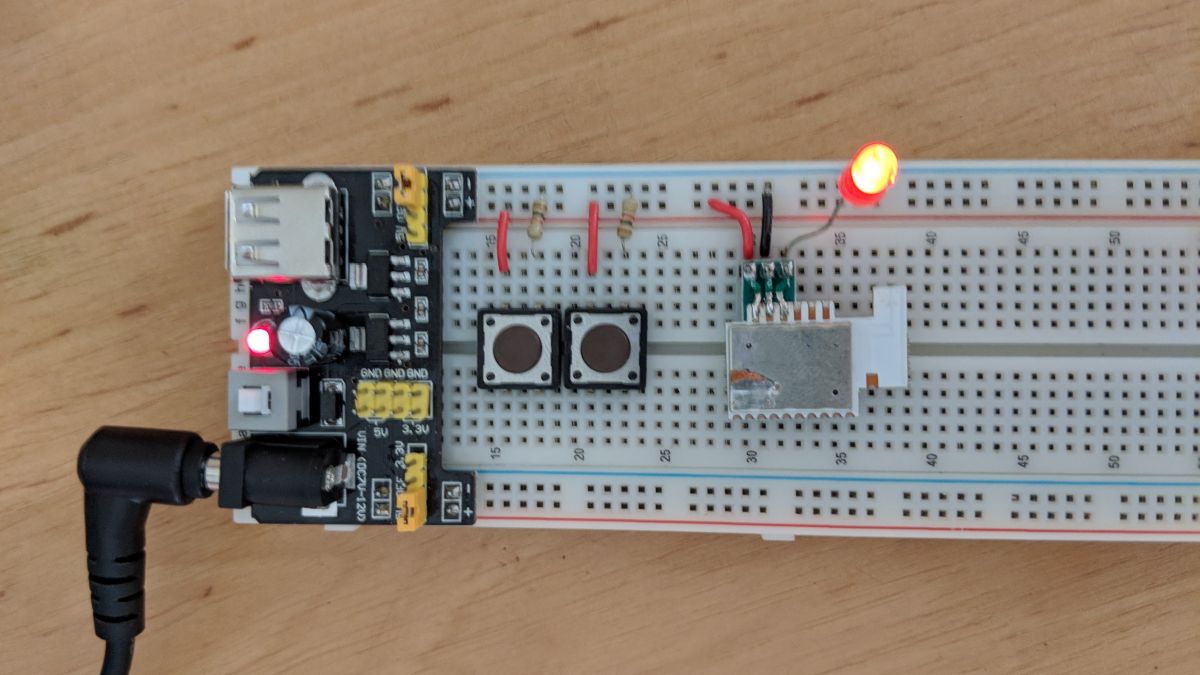
Skill level: I am good at electronics and like soldering things
Time: Don't do this
If you want to save even more money and like soldering or pulling things apart, I have a great option for you: do it yourself! The above picture may not look like much, but that's a test of a Tradfi controller (pictured right) powering a custom LED via the Hue app.
Before I discovered the above option, my friend Kees Plattel embarked on a slightly-crazy idea: what if we pull apart an IKEA Tradfi bulb, which is also natively compatible with Hue, and steal the chipset it uses to control the bulbs?
This is appealing option, particularly because IKEA sells Tradfi bulbs as low as $6.99 that you can gut to get their chips, saving a bunch of money, but increasing complexity. Also, it turns out to work really well... if you have the time to invest in building it, and is much smaller than the Gledopto version.
I'll update this post with the details on how to do this yourself with details from Kees soon, so check back if you're looking to do this for yourself. We've got a working strip, but are waiting for the power supply to arrive!
Update, Jan 2020: Lots of you have written to me to ask about this option, but the bad news is simple: I don't recommend it. Unfortunately, the Tradfri hack didn't seem to work reliably, and was prone to burning out–the Gledopto option above is better.
That's all folks
These are the working options I've come across, and I'm pretty happy with the Gledopto setup as well as Kees' IKEA hack after a month or so running it everyday. The lights even work with Google Home! I recommend the Gledopto for sheer simplicity, but DIY-hacking can't be beaten on price.
Let me know if you have success of your own if you build this, or if you have any questions about how it works, in the comments!
Editor's note: This article contains affiliate links, which help us monetize Charged if you buy something we recommend.

